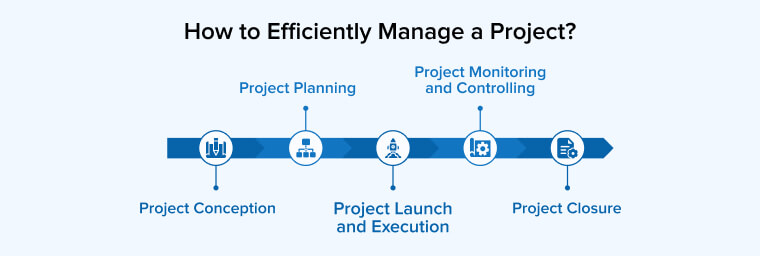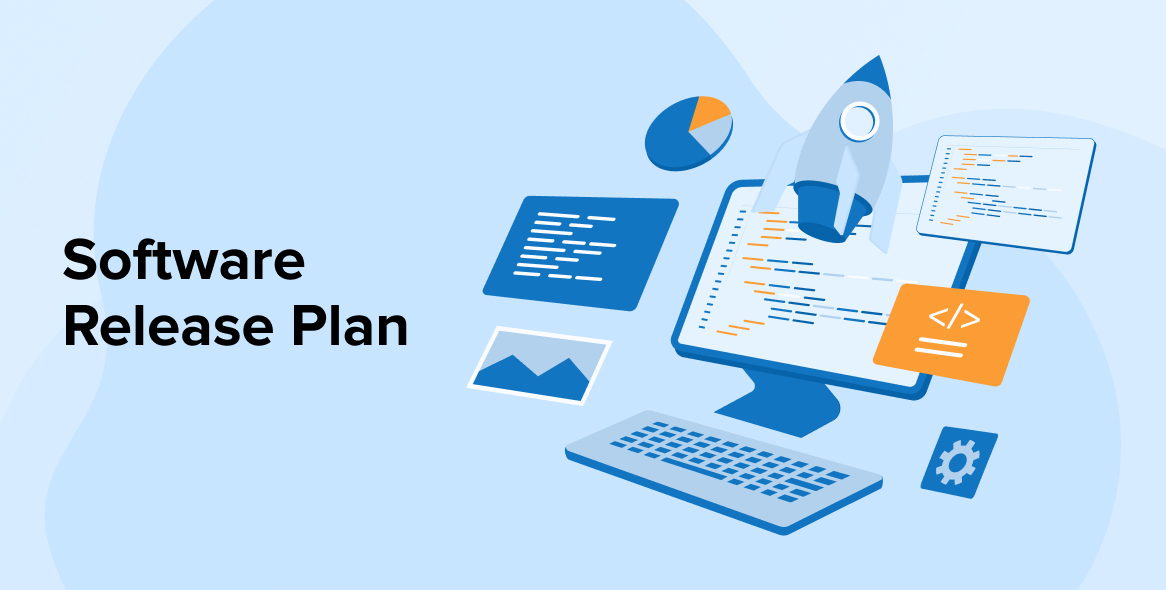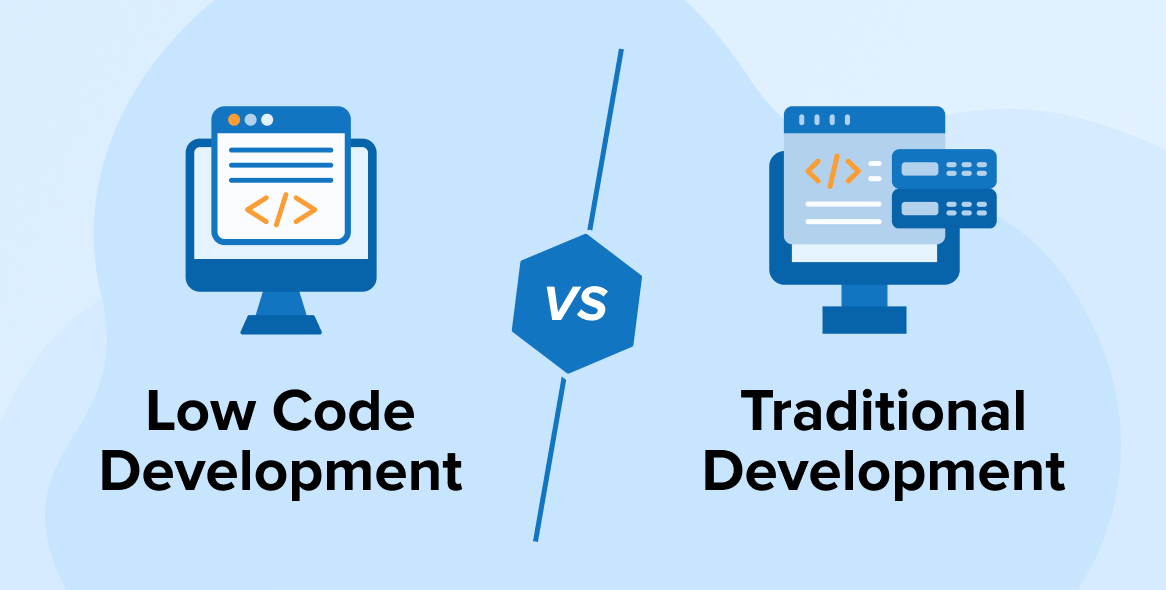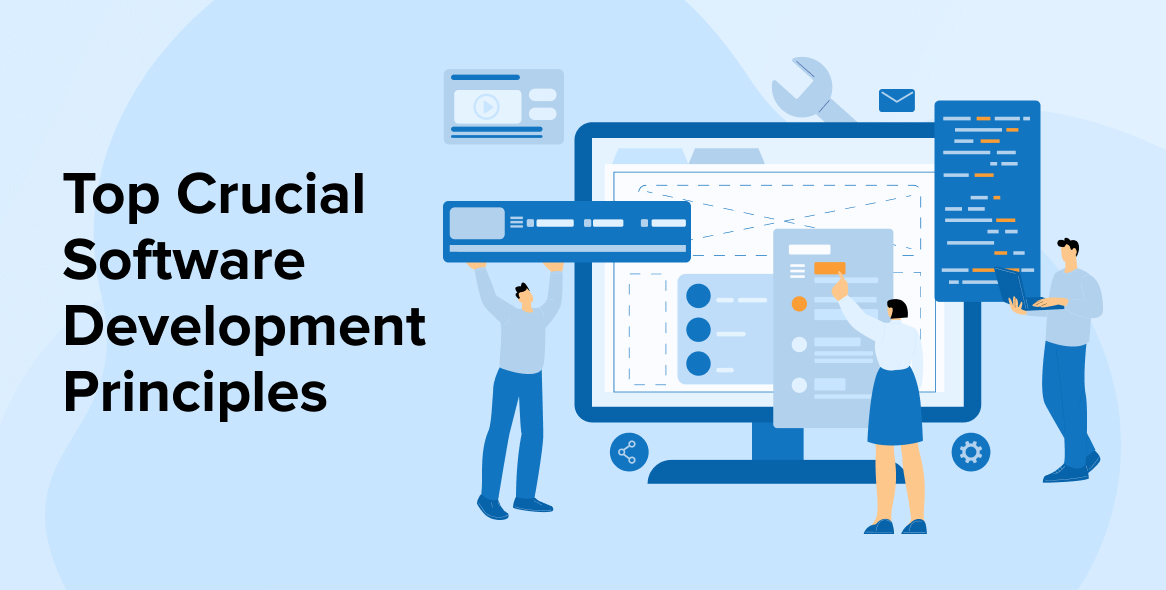
In the quickly evolving technological sector, the importance of software is becoming more present in the daily lives. To deliver this development in a much faster way without hassle, custom software development firms must know how to manage software projects effectively. It doesn’t matter whether your software development team is small or large, there are bound to be various moving parts with any new software product. The main cause of software development failure is mostly bound to poor software development project management.
When it comes to managing software development projects, the most common mistakes to avoid are unidentified risks, improper communication, inaccurate cost estimates, changing project objectives, and more.
So before we move further, remember that you must have a better understanding of what software development project management is, why and how we can use it.
In this post, we’re going to discuss everything that you need to know about software development project management, why it is important, how to manage your project, and much more. So what are we waiting for? Let’s go!
1. What is Software Development Project Management?
Project management in software development is the process of monitoring, planning, executing, tracking, resource allocating, scheduling, and delivering software and web projects. It is entirely different from traditional project management, risk management, time, and resources management, and ensures on-budget delivery.
It is not easy to build cutting-edge software as it requires a controlled environment. Such projects are better seen as complex undertakings, where leaders should identify the optimization issues between the software development process and business value.
Basically, it is a process of building a complete software product, from the initial idea to the final product and beyond — such as making improvements and maintenance.
This process uses project management principles to help achieve software-related goals. Software development team use these project management practices to deliver projects of all shapes and sizes which also include:
- Configuration management
- New software development
- Test-driven development
- Updates and patches
- Information system development
2. Why is Software Project Management Important?
The importance of software development project management cannot be overlooked as it aims to develop a cutting-edge software project that positively affects your organization. It ensures that all the team members know what is the exact purpose of the project and what steps are involved in it to meet the end goal.
If you’re not implementing any project management strategies, software development teams might start working on a project without having any clear vision which leads to more frequent errors and sometimes even failure. Apart from this, it makes sure that there is a strategic method to achieve software-related goals.
Project managers are only responsible for the success and even failure of the software project management if not implemented correctly. They need to ensure that the project is properly aligned with business objectives, delivers real value to all the key stakeholders, and high-quality results.
The software development process is not an easy task as it comes with multiple risks and challenges such as sloppy development systems, frequent changes in technology, management turnover, and much more. Building a cutting-edge software product also comes with other potential challenges which need to be taken care of to reduce the chances of software failure.
3. How to Efficiently Manage a Project?
According to the Project Management Institute, there are five key stages in a software development life cycle from a PM’s point of view.

3.1 Project Conception
This is the first phase of the software development lifecycle which helps to determine the core project features & objectives, identify a clear goal, define business requirements, and draft the statement of work. Creating a project charter having all the required details such as human resources, project goals, budget, project estimation and the expected timeline, etc.
Once your project charge is active and all set to proceed further, the next task is to analyze the objectives and identify key project stakeholders. When you’re establishing your goals in the project conception stage, make sure that there is no technical complexity available as this is the task for stage two. Project conception needs effective collaboration between all project stakeholders, with a senior project manager and business analyst taking a lead.
3.2 Project Planning
This stage is one of the most assertive factors for the software development roadmap and it all depends on the software development methodology that you have chosen for your project. Here all the project requirements are broken down into iterations to make it even more simple. The most commonly used software development strategy is agile offers excellent advantages such as
- No budgetary limitations to addressing the latest requirements.
- It helps you to gain potential business stakeholders in the development process.
- The requirement of documentation is not necessary so it saves time and money.
- Minor problems are identified at an initial stage before they become more critical to handle.
This stage is a cooperative effort when it comes to the project development team as it designs a solution and comes up with its look and feels. Once your project is found realistic by your feasibility study, it satisfies an unmet need and then you’re all set to start your IT project management planning. Don’t forget to define your goals, objectives, requirements, and responsibilities in the first stage to keep your project moving and avoid backtracking.
After you’re done with creating your project plan, the project manager will devise the plan and craft a work breakdown structure to prepare a proper project schedule. This stage aims to understand the scope of the project and set the base for project performance monitoring, maintenance, and control.
3.3 Project Launch and Execution
The project execution stage cannot be neglected as it is one of the most important stages of software development. In this stage, team members complete their tasks, and the project manager ensures that all the tasks are performed on the same page and that the software development process is going smoothly.
Project managers should set up software development metrics like key performance indicators and critical success factors so that no one deviates from the original project course and project objectives are fulfilled. Not only this, but they should also keep a track record of the cost during the development process to confirm the exact budget and time required with long-term sustainability kept in mind.
When your project team members are engaged in the software development process and testing the solution, a project manager monitors the performance of the entire team, eliminates bottlenecks, facilitates effective communication between the key stakeholders and team members, checks the progress of a project, and reports to the senior management.
3.4 Project Monitoring and Controlling
Monitoring and controlling the project are important factors to take into consideration while building a software project because it cannot be successful without perfectly managing and maintaining project documentation. The project manager is responsible for preparing the final project documentation for future references, techniques, advanced features as well as functionalities, and specifications.
In this stage, the set of deliverables is extended to a staging environment, where beta testing is performed. The product development team supplies the essential foxes depending on the requirements. The project manager should ensure that the project management solution is delivered before the deadline and guarantee that the delivered software satisfies the agreed acceptance criteria.
3.5 Project Closure
This is the final phase of software development where the project manager is responsible for holding a detailed project review and assessing the bottlenecks of the entire project. Not only this, but they also make sure that the scope of deliverables is handed over to the product owner, including the development environment, source code, and more.
These are the critical stages to consider but it all depends on the software development approach that you’re willing to use for managing software development projects.
4. Popular Project Management Methodologies in Software Development
Choosing the best methodology for project management is might be a daunting task. Here are a few listed methodologies to select from.
4.1 Scrum
Scrum is one of the most popular and demanding project management approaches in software development. Scrum breaks down the development process into sprints. It follows the fundamental agile principles to receive instant responses to customer feedback and focus on effective communication.
This type of software project management methodology is suitable for projects with a high level of uncertainty as it is dependent on cross-functional teams and adopts the concept of incremental development based on experimentation. Scrum-based project management is entirely different from traditional project management approaches. You can also use project management tools for the software development process to make it even more efficient.
The process of scrum operates according to the steps mentioned below:
- Sprint planning: All people involved in the project discuss the sprint objectives and pick metrics that contribute to achieving the same goal before creating a sprint backlog.
- Implementation: While developing the software, the team members should conduct daily meetings to stay on the same page and track the project’s progress.
- Sprint review: This step takes place at the end of the scrum sprint where the development team presents their work to the product owner and waits for the response.
- Sprint retrospective: This is the final phase where team members look back on what worked well and see what needs to be improved to make the product more effective.
4.2 Waterfall
This project management platform is popular amongst software companies as it allows them to easily manage software development projects and works well for projects with predictable scope. This strategy is a traditional development process that includes six main phases:
- Software requirements: Here the project manager works closely with a client to understand the project requirements and goals properly.
- Analysis: In the second phase all the key stakeholders and the entire team thoroughly examine the problem and establish business principles to overcome the challenges.
- Design: In this phase, software developers and software architects come together with a picture to develop a technical design for the problem and data models.
- Coding: Here the technical solution is implemented by programming software based on predetermined specifications.
- Testing: Software testing and debugging are the two main aspects of the software development process which cannot be neglected. It is important to perform testing before the deliverable reaches end-users so that no errors are there in the software.
- Operations: This is the last stage which takes place after the product launch and involves technical support and maintenance.
4.3 Agile
Agile is one of the most popular project management methodologies for software development used by various giant and modern-day companies. This method consists of short phases and involves frequent testing and reviews in the process. After addition to a backlog, the project manager allocates these tasks through each phase according to the priorities set. Agile is suitable for the project which tends to change often and must be completed in the least time possible.
The Agile lifecycle consists of the following six steps:
- Concept: Scope definition and priority setting is the first phase in the Agile methodology. Gather your team and any relevant stakeholders for a round of brainstorming to determine the scope of each project and how much time and money it will take to finish.
- Inception: When starting up, what do customers typically need? Make a chart outlining the tasks that will need to be completed in each sprint and the roles of members.
- Iteration: Now that you have a clear vision for your project and approval from the appropriate parties, the development team may begin the first iteration.
- Release: Before putting anything into production, you must go through a last round of testing and quality assurance. It will find and fix any remaining issues and polish up any necessary user manuals.
- Production: As soon as you reach the production stage, your feature will be online. Maintaining a functional system and happy users requires constant attention and guidance from your staff.
- Retirement: Your system enters retirement when it becomes obsolete, is no longer needed, or is about to be rebuilt. Informing customers and retiring the system release from active use are all part of this phase.
5. The Role and Responsibility of a Software Project Manager
Here are the role and responsibilities of software project managers that they must follow:
- Leading the software projects.
- Handling project communication.
- Maintaining project documentation.
- Delivering a daily status report to senior key stakeholders.
- Managing more than one project simultaneously.
6. Conclusion
Whether a large or medium-sized enterprise is working on generating innovative software responses, project management is very crucial.
If you use a project management schedule to optimize your organization’s software development process, you’ll be able to create and forward final products on time and in an orderly fashion.
An effective software project manager will know how to find the appropriate people, use the proper tools, and minimize risks.






Thank you for sharing it ! Article is comprehensive and informative. The writer does a good job of explaining the different phases of a project, as well as the key tasks that need to be completed in each phase. The article also provides some helpful tips for managing software development projects effectively.
Article is informative and well-written, and I learned a lot about the different aspects of project management that are important for successful software development. I particularly liked the section on the importance of communication in software project management.